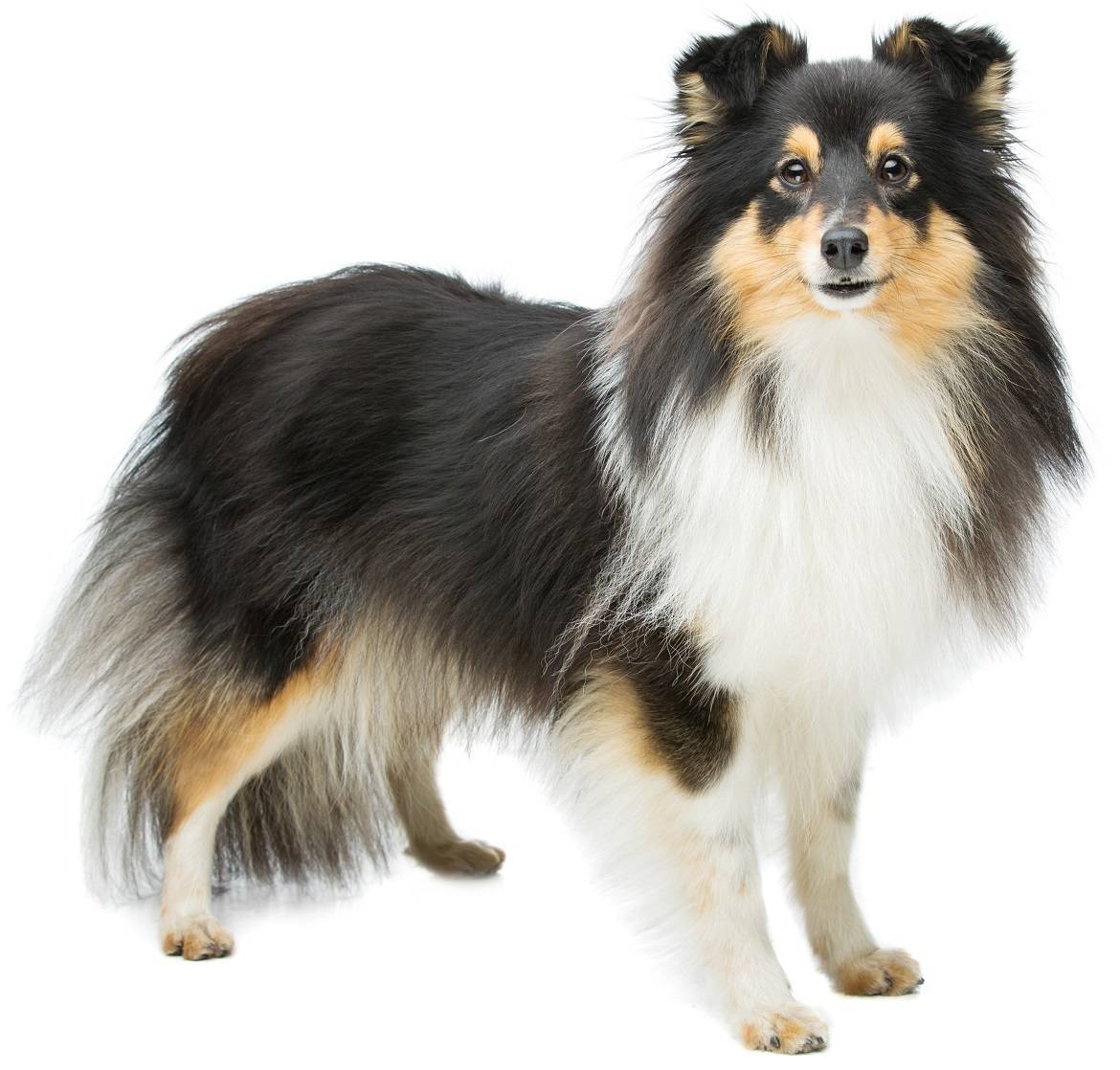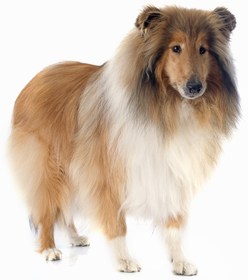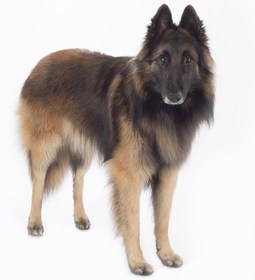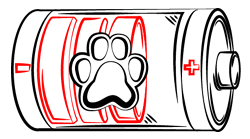
Paws ‘N’ Pups Quickview
Size
| Energy Level
| Trainability
| Paws ‘N’ Pups Rank
|
Characteristics
| Physical Characteristics: Height: 13-16” Weight: 11-24 lbs. Energy Level: Moderate | Colors: The American Kennel Club recognizes the Shetland Sheepdog in the following colors:
|
Health & Longevity
Average Life Span: 12-15 years
The Shetland Sheepdog is considered a relatively healthy breed when bred correctly. It is important to understand that this breed is often known for poor breeding practices. Since this is a popular breed, it is commonly found in puppy mills, pet stores, and shelters.
Without a reliable breeder, your puppy is more likely to have genetic or inherited conditions. Some of the major medical concerns in this breed, as a result of poor breeding, include blindness, PRA, Von Willebrand’s Disease, heart disease, hypothyroidism, and hip dysplasia.
Blindness may be present in your Shetland Sheepdog when he or she is born. This is caused by a genetic condition and you will notice a difference in the coloring of your pup’s eyes. Often times, blindness develops over time in your pup and may not be present until your pup is much older. It is important that you have your pup’s eyes screened regularly to catch any problems that may arise.
PRA or progressive retinal atrophy is an eye disease that occurs when the retina degenerates. This genetic condition leads to blindness over time.
Von Willebrand’s Disease is a blood disorder that occurs when there are not enough proteins within your pup’s platelets. This means that the platelets cannot clot correctly and your pup may bleed more than normal. This can become a problem when your Shetland Sheepdog needs to have surgery performed.
Heart disease may be present in your Shetland Sheepdog, so it is important to have your pup screened on a regular basis to catch any problems early on. Heart disease can be caused from your pup being overweight or having high blood pressure.
Hypothyroidism occurs when your pup’s thyroid does not function properly. This condition often leads to either obesity or trouble gaining weight. Your pup will not display both symptoms, but will face one of two extremes. Thyroid conditions can be handled with medication from your vet.
Hip dysplasia is a genetic condition which could be passed down to your Shetland Sheepdog. This condition is extremely painful for your pup and can lead to arthritis. This condition occurs when the hip joint or hip socket are deformed.
The Shetland Sheepdog has a life expectancy of 12 to 15 years.
Temperament & Train-ability
The Shetland Sheepdog is known as a very friendly and loyal breed. You are not likely to have any problems with aggression when it comes to your new pup. This breed is social with everyone that is welcomed into your home. For those that have not been, your Shetland Sheepdog makes for a good watchdog and will alert you to any intruders.
You will find that this breed is very intelligent and bright. He or she is able to pick up on your emotions and commands without a problem. Since this breed is smart, you will find that he or she learns quickly and training is usually easy and fun.
This breed does well with children and loves them. You will find that your pup likes to play with your children and will match their energy level. Your puppy will be quite active outdoors, but knows how to calm down inside of your home.
The Shetland Sheepdog is a wonderful breed for new owners, but you need to make sure you provide your pup with exercise throughout the day. This breed can adapt to apartments or homes, but make sure that he or she gets enough physical stimulation. Without the proper stimulation, this breed is known to bark loudly and become destructive.
Grooming
The Shetland Sheepdog is a high maintenance pup, but that does not mean that his or her needs cannot be handled on your own. You simply need to be able to commit the time necessary to give your pup the right amount of care.
The Shetland Sheepdog needs to be brushed on a regular basis. In fact, you should brush your pup once to twice per day to remove any mats or tangles in his or her hair. This breed sheds a lot, so it is important to be prepared for this.
You do not need to bathe your Shetland Sheepdog unless it is truly needed, but you do need to make sure that you clean your pup’s ears once per week to prevent ear infections.
Lastly, you need to trim your pup’s nails about once per month to ensure that the nails do not grow too long, as this can lead to snags or breaks, which are painful for your pup.
Diet
Your Shetland Sheepdog will consume about 3/4 cup to 1.5 cups of dry kibble per day. Ideally, you should split this amount into two meals.
The kibble you choose needs to be high quality, to meet the nutritional needs of your pup. You should look for a food that is made with whole ingredients and does not contain any fillers or by-products.
Looking for a Shetland Sheepdog?
 Find A Shetland Sheepdog Breeder |  Shetland Sheepdog Puppies For Sale |  Adopt A Shetland Sheepdog |
Cost
A Shetland Sheepdog will cost you about $900. You can probably find this breed in a shelter or a local dog rescue near you. If you choose to adopt your Shetland Sheepdog, you can expect to pay about $200 in adoption fees.
Paws ‘N’ Pups Ranking
Paws ‘N’ Pups ranks every breed out of 4 with 1 being easiest to integrate into your life and 4 being the toughest – The lower the ranking the better.
Ranking takes into account a few basic factors including cost, skill level needed, high vs low maintenance and how critical regular training is to success. The Shetland Sheepdog is a popular choice amongst families because this breed is affectionate, good with children, and fun to have around. This breed is easy to train and enjoys being around those in his or her family. This breed ranks a 2.
Breeds Similar To Shetland Sheepdog
 Collie |  Belgian Sheepdog |  Belgian Tervuren |  Belgian Malinois |




